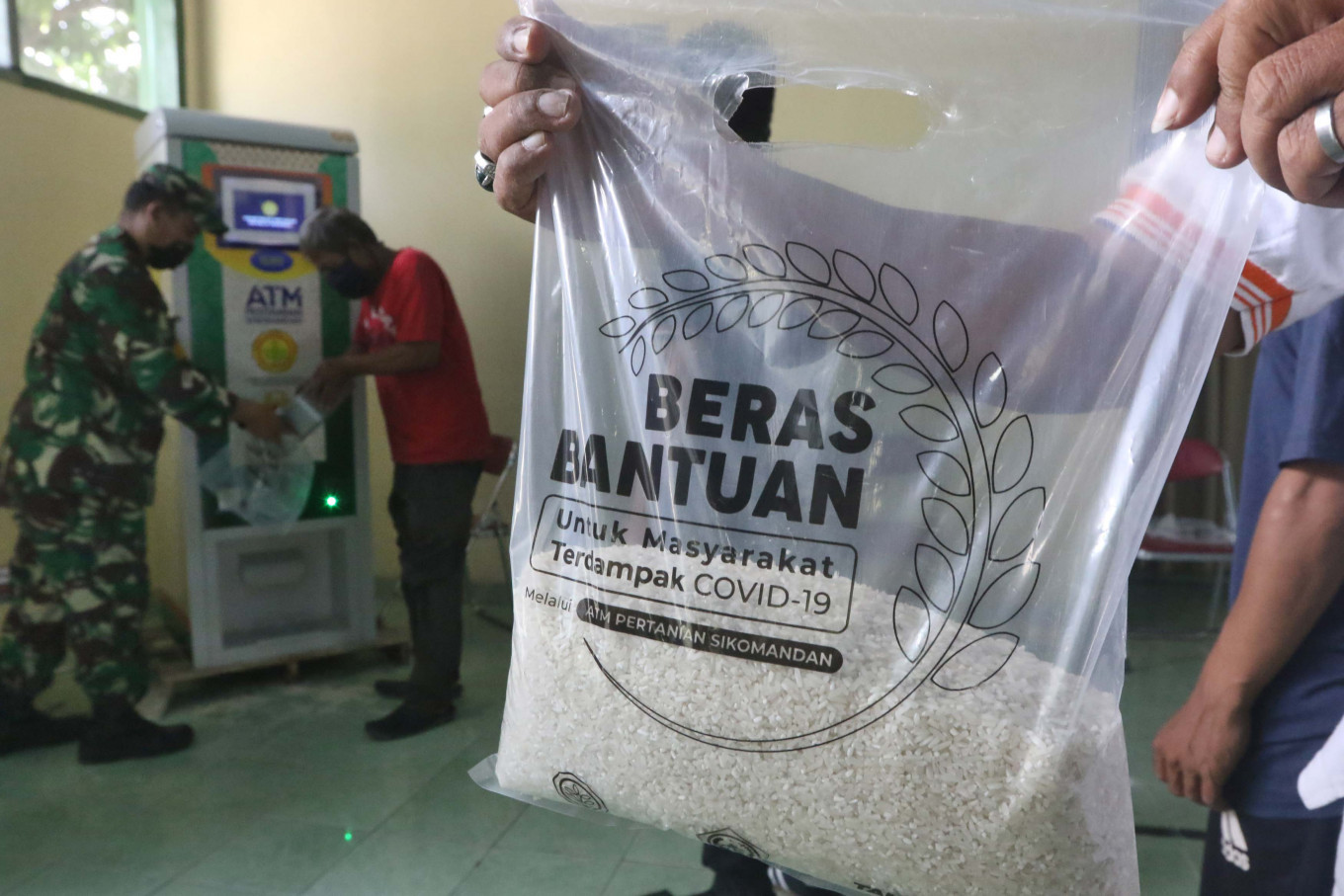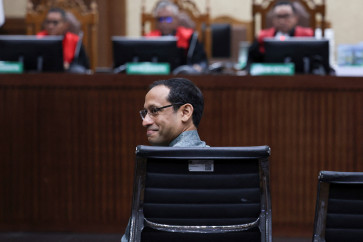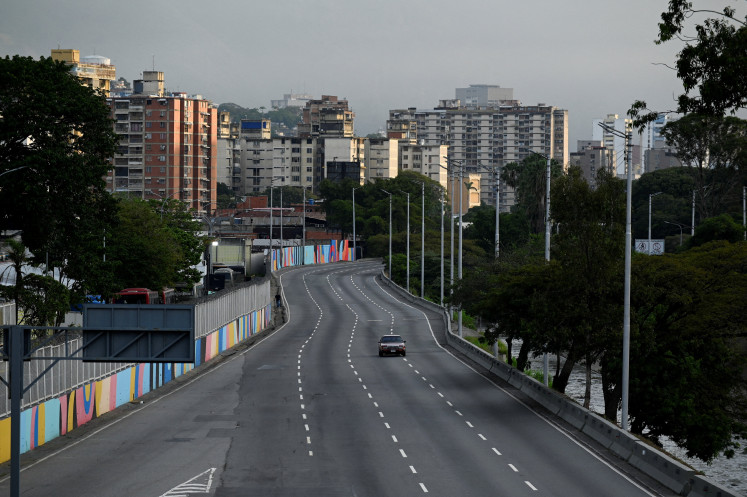Popular Reads
Top Results
Can't find what you're looking for?
View all search resultsPopular Reads
Top Results
Can't find what you're looking for?
View all search resultsRecovery should focus on high-poverty sectors: UI researcher
Change text size
Gift Premium Articles
to Anyone
 A recipient holds up a free bag of rice from the ATM Pertanian Sikomandan (Agricultural Command ATM) at the South Jakarta Military District Command on Monday. The Agriculture Ministry is distributing food aid to those who have been badly affected by the COVID-19 pandemic in Greater Jakarta. (JP/Dhoni Setiawan)
A recipient holds up a free bag of rice from the ATM Pertanian Sikomandan (Agricultural Command ATM) at the South Jakarta Military District Command on Monday. The Agriculture Ministry is distributing food aid to those who have been badly affected by the COVID-19 pandemic in Greater Jakarta. (JP/Dhoni Setiawan)
I
ndonesia’s recovery from the economic effects of the pandemic must focus on the sectors where the greatest number of workers have fallen into poverty, according to a researcher from the University of Indonesia’s Social and Economic Research Institute (LPEM UI).
This would mean that agriculture would take priority in most of the provinces of Java as it has seen the most significant increase in poverty of any sector in those provinces, according to LPEM UI head of environmental studies Alin Halimatussadiah.
In the Bangka Belitung islands, the priority sector would be mining, she added.
“This is the distribution of COVID-19’s impact on poor citizens,” said Alin. “This is how we tell the government that there are large numbers of poor people who have been hit in these sectors.”
The government expects 4 million people to fall below the poverty line this year as a result of the pandemic, increasing the number of poor people in the country to 28 million, about 10.6 percent of the population.
The SMERU Research Institute, however, has a grimmer estimate. The institute predicts that 8.5 million people will fall into poverty this year, increasing the poverty rate to 12.37 percent, a figure last seen in 2009.
The economy shrank by 5.32 percent year-on-year (yoy) in the second quarter of this year as most sectors experienced pandemic restrictions and household consumption and investment fell.
Alin said the ongoing health crisis threatened the country’s Sustainable Development Goals (SDG), including progress in the alleviation of poverty, the development of infrastructure and the promotion of more equal access to quality education.
The government has earmarked Rp 695 trillion (US$47.39 billion) in spending to boost the economy and strengthen the healthcare system during the pandemic.
Finance Minister Sri Mulyani Indrawati said in early August that the government planned to expand its social aid programs and incentives for micro, small and medium enterprises (MSMEs) by reallocating Rp 70.8 trillion from existing ineffective stimulus packages.
Under the plan, the government expects to allocate Rp 4.6 trillion to increase the amount of rice given to the 10 million recipients of the Family Hope Program (PKH) to 15 kilograms per month. It also plans to disburse Rp 500,000 to 10 million Staple Food Card recipients this month.
The government has earmarked Rp 37.7 trillion for a wage subsidy program for workers earning less than Rp 5 million per month. The program will target 15.7 million workers.
Masyita Crystallin, a special advisor to the Finance Minister, said the pandemic’s impact on poverty would depend on which sectors were prominent in a given province.
The pandemic has hit agriculture, trade, construction and manufacturing the hardest, and these sectors tend to employ informal workers with less education.
“These are the sectors that were hit first by the pandemic,” said Masyita. “The government is therefore focusing on supporting labor-intensive sectors first.”









